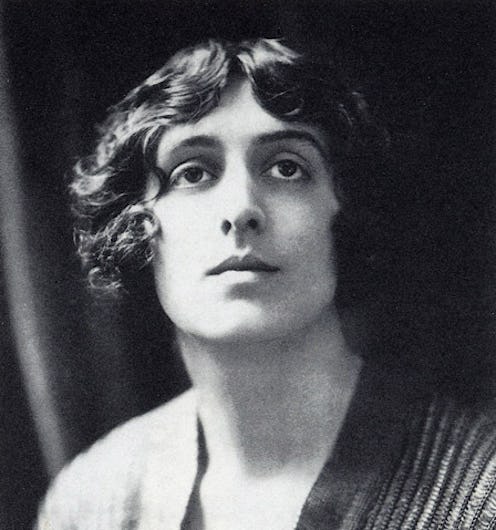Books
You Can Now Read A Story From The 1920s By Virginia Woolf's Lover, Vita Sackville-West
She is the woman who inspired one of Virginia Woolf’s most popular novels, Orlando: the feminist classic, fictional biography of a timeless, gender-fluid poet who lives for centuries. In her own life she was a prolific writer — the author of 13 novels and over a dozen poetry collections, and a columnist for British newspaper The Observer — as well as a celebrated garden designer. In spite of this, what she is perhaps best known for is her scandalous sex life — one that included an open marriage, a string of same-sex lovers, some super-sultry love letters, and an intense infatuation with the Orlando author herself.
Her name was Vita Sackville-West and A Note of Explanation: An Undiscovered Story from Queen Mary’s Dollhouse is a previously unknown work by this iconic (if somewhat overshadowed by her off-the-page reputation) writer. The recently unearthed title has been shelved in plain sight since as early as 1922, when it was written — as a miniature, postage stamp-sized book to be placed in the library of Queen Mary’s doll house in Windsor Castle — and was re-published this month by Chronicle Books as a cloth-bound, illustrated, (and larger-than-pocket-sized) collector’s edition.
For those perhaps less-familiar with the surprisingly wide world of miniatures, Queen Mary’s doll house was built in the 1920s and is considered the world’s most elaborate doll house. It features electricity, flush toilets, running hot and cold water, and a working elevator. The grandmother of Queen Elizabeth II, Queen Mary commissioned many of the greatest artists and writers of the time to create original works of art and literature for the to-scale construction project: tiny paintings and ceramics, carpets and tapestries, and hundreds of thumbprint-sized books for the doll house library. A total of 171 authors like A.A. Milne, Arthur Conan Doyle, J.M. Barrie, Joseph Conrad, Thomas Hardy, Rudyard Kipling, and others contributed these tiny and well-known works, most of which have been published (to size) since they first appeared in miniature. Most, that is, except Sackville-West’s A Note of Explanation.
A Note of Explanation by Vita Sackville-West, $18, Amazon
But what is A Note of Explanation about — and, more importantly, is it perhaps the original version of Orlando, written at least a full four years before Woolf’s own novel was published in 1928?
At the very least, the book indicates the significant influence Sackville-West had on Woolf and her writing. Written as a fairy tale, A Note of Explanation tells the story of a lively and inquisitive spirit who takes up residence as the doll house ghost in 1924. The time-traveling spirit claims pivotal roles in some of the most iconic moments in literary history: bearing witness to Scheherazade’s’ storytelling, Bluebeard’s murdering, Cinderella’s ball, Jack’s assent up the beanstalk, Sleeping Beauty’s kiss, the Princess’s pea, the creation of Aladdin’s palace, and more. Throughout her travels, the spirit transforms her identity (and her impeccable fashion sense) in correspondence with her surroundings, finally arriving in Queen Mary’s doll house styled as a sassy, 1920s flapper.
While A Note of Explanation stands alone in Sackville-West’s body of literary work as the only fantasy-filled and playful title the writer ever published, it’s also filled with echoes of Orlando: Sackville-West's fictional spirit resembling Woolf's fashionable and gender-fluid time traveler who also encounters a revolving door of historical figures from English literature. It’s possible that both titles simply use the life and energy of Sackville-West herself as inspiration for the main character: Orlando being not only dedicated to Woolf’s friend and lover, but long said to be based on the life and family history of Sackville-West as well. In fact, it's likely that A Note of Explanation was already written and awaiting shelving in Windsor Castle before Woolf and Sackville-West even met, for the first time in December of 1922.
Whatever the case may be, readers will have no difficulty spotting the parallels between the two titles, if only that they both celebrate the infectious spirit of the woman who inspired them.
If you’d like to see the miniature library, and the whole of Queen Mary’s remarkable doll house itself, both are on public display in Windsor Castle. Just don’t plan you visit for this May 19. I hear Prince Harry and Meghan Markle have the castle all booked up that day.
